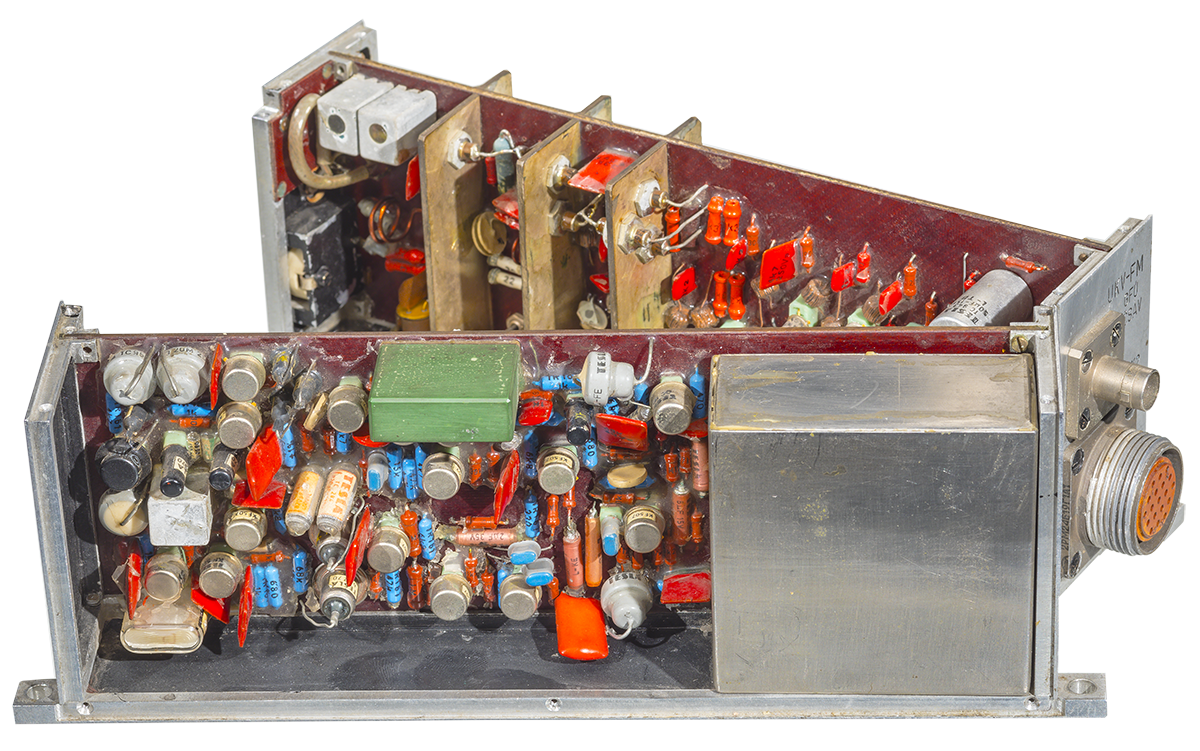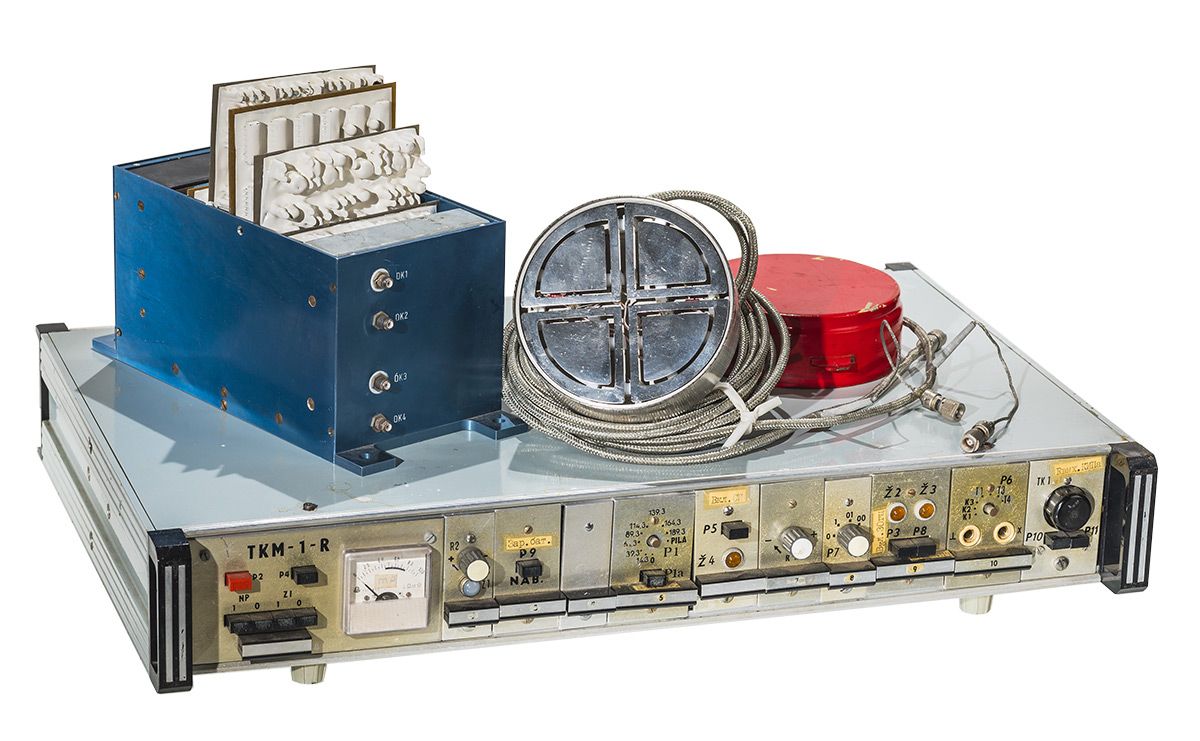1957 1962 1970 1978 1989 - 2002 / Downloads: Paper cut
Before Magion

1957
Sputnik, the first artificial satellite of the Earth
„I started to search through the radio band and heard the ham radio community speaking about it. The NBC TV station even interrupted the program in the morning of that day, announced the launch of the spacecraft by Soviet scientists, informed about frequencies of 20 005 and 40 002 kHz, and broadcasted their recordings of the famous beeps.“
„On the 4th of October mankind entered a different era of its evolution, the era of releasing its bounds to the Earth and the beginning of interplanetary flights. The era in which the ionosphere is not only investigated using radio waves emitted from the Earth’s surface...“
Dr. Jiří Mrázek (1923-1978),
ham radio operator and founder of the ionospheric department of the Geophysical institute, Czechoslovak Academy of Sciences, where he investigated the influence of the ionosphere and solar activity on radio wave propagation.
1961
The first human in space
Jurij Gagarin, Soviet Union
1962
The Panska Ves observatory is ready to receive scientific telemetry data from spacecraft
At the end of the 19th century, telephone operators noticed strange whistling sounds coming from long telephone lines. In 1953 the origin of these mysterious sounds was finally revealed: these „whistlers“ are low frequency electromagnetic waves that are emitted from lightning discharges and then propagate through the plasma environment of the Earth, the so called ionosphere and plasmasphere. Artificial satellites opened new possibilities for investigation of this environment, which was previously analysed only using ground-based measurements.
1967
start of the Intercosmos programme
Intercosmos 3, launched into orbit in 1970, was the first spacecraft carrying an instrument from the ionospheric department: a telemetry transmitter for signals of electromagnetic fields in the very low frequency band.
1969
The first human on the Moon,
Neil Armstrong, United States

1970
Picture: Analog telemetry transmitter
launched in 1970 onboard the Interkosmos 3 satellite.
1972
Picture: Instrument for measurements of cold plasma properties KM-1R and its sensor for measurements of electron temperature launched on the Interkosmos 8 satellite.
1973
Picture: Flight spare model of the electromagnetic wave analyser BPX-1,its power supply unit APX-4 and electric field antenna for measurements onboard the Interkosmos 10 satellite; ground support equipment KPX-1 dedicated to testing of the analyzer.
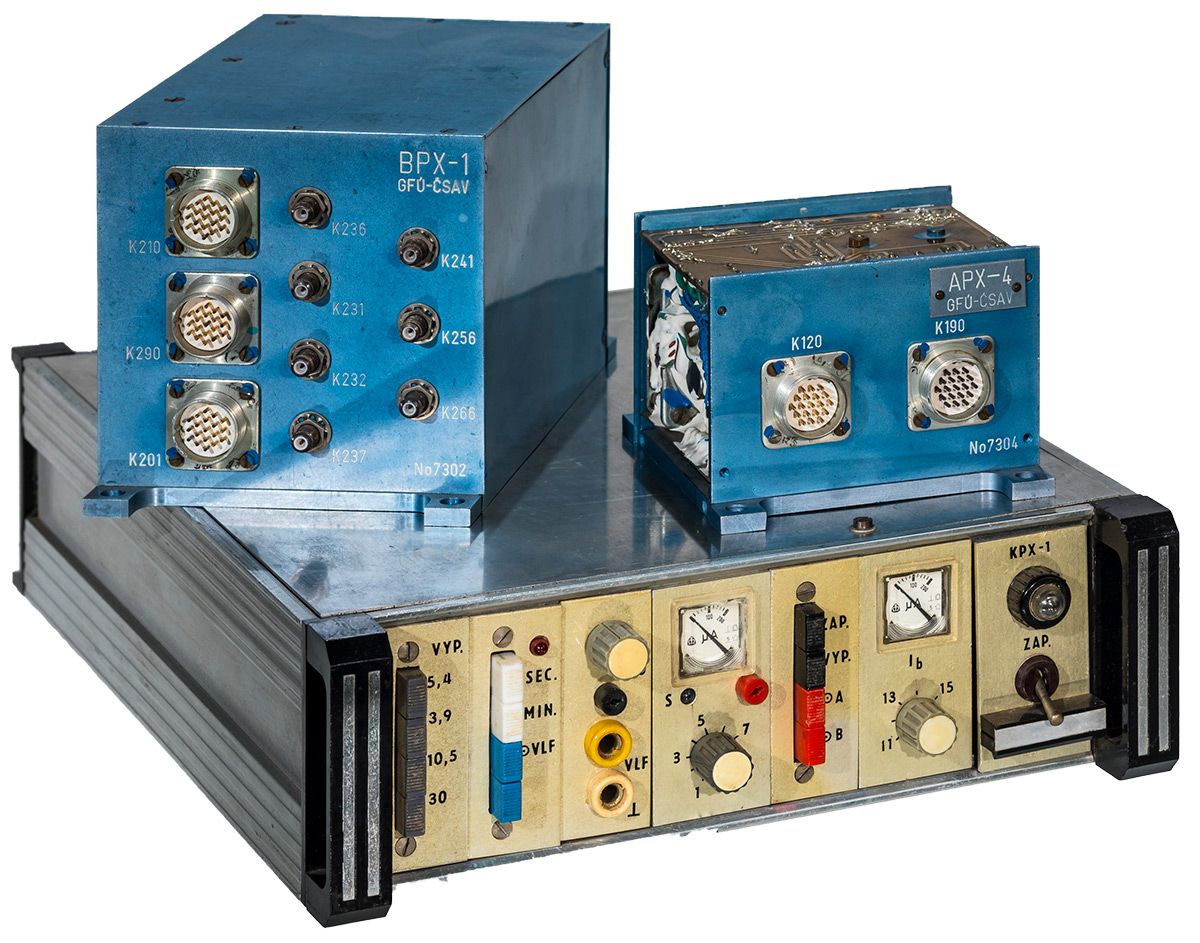

1978
The first Czechoslovak cosmonaut
now also the first astronaut from the European Union, Vladimír Remek
The Intercosmos spacecraft carried Czech instruments on board but the scientists dreamed about a separate spacecraft which would allow them to obtain more detailed data on the propagation of electromagnetic waves. An idea was born: to build a separate block of instruments and carry out the same measurements on the same orbit as the main spacecraft but at a well-defined distance from it. This new research methods was well received. Just, the spacecraft needed to be developed and built and the place for it on the rocket needed to be found...
October 24, 1978
the first Czechoslovak spacecraft Magion was launched into orbit
„To convince others that this is a real proposal, not a pure fantasy, this was the most difficult task...“
Dr. Pavel Tříska, CSc. (1931–2018), head of the Magion development team play / An interview abount a creation of Magion 1 satellite with Dr. Tříska and Vojta. Broadcasted in "Nula-Jednička" session, Radio Leonardo, 24. 10. 2005 (in Czech)
play / An interview abount a creation of Magion 1 satellite with Dr. Tříska and Vojta. Broadcasted in "Nula-Jednička" session, Radio Leonardo, 24. 10. 2005 (in Czech)
Radio signal from the spacecraft was received, decoded, and recorded by a tape recorder. The tape reels were then re-played and analysed.
MAGION 1
Picture: The spare flight model of Magion 1, identical to the actual flight model which was launched into orbit, together with the main spacecraft Intercosmos 18 from the Russian cosmodrome Plesetsk.
The Secret of Magion
After the separation from the main spacecraft, Magion 1 deployed its antennas and gradually started its first measurements. Two scientific instruments were carried onboard, in order to measure electromagnetic waves and charged particles. The last data were received on September 10, 1981 before the destructive reentry of the spacecraft to the Earth atmosphere.
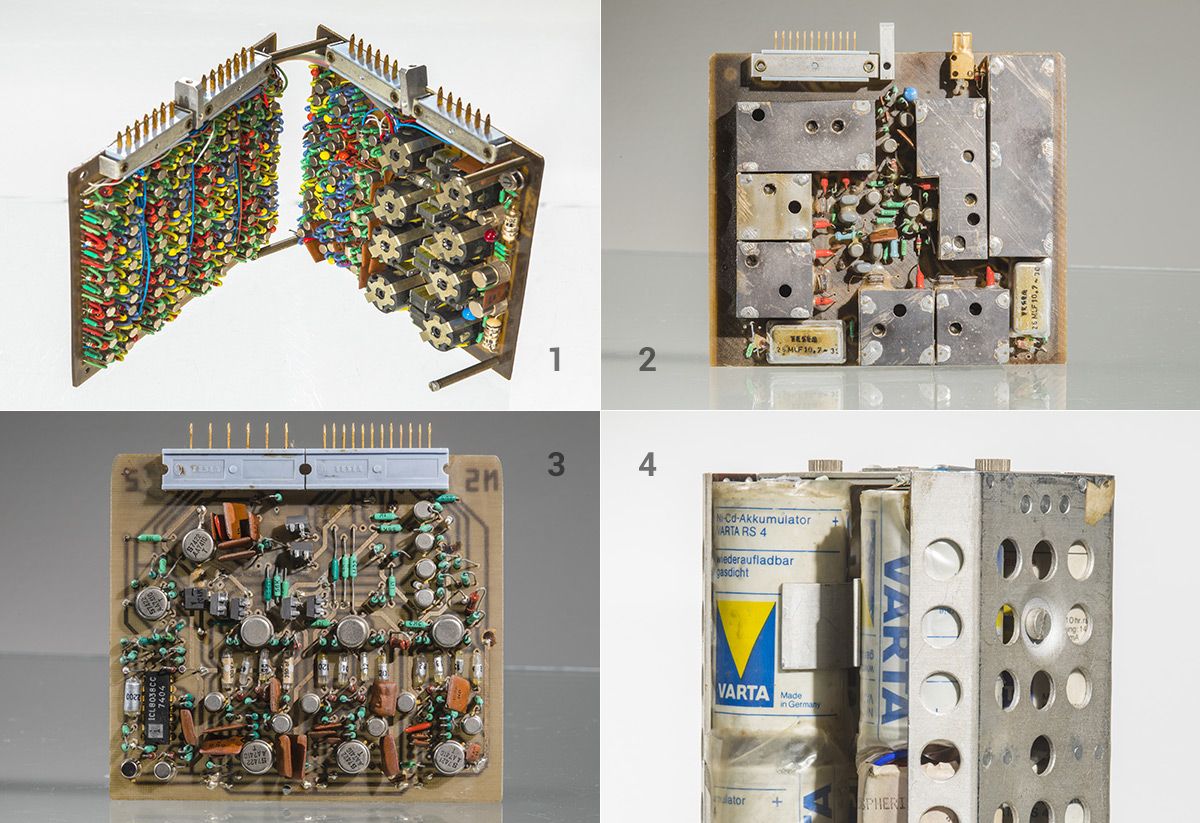
Pictures:
1/ Prototype of the onboard command decoder for the MAGION 1 satellite.2/ Prototype of the onboard command receiver for MAGION 1 satellite.3/ Prototype of the electronic board dedicated for the analysis of natural signals recorded by magnetic and electric antennas onboard the MAGION 1 spacecraft in the very low frequency band.4/ Block of power accumulators from the Magion 1 payload.
Magion 2 through 5
Picture: An engineering model of the Czechoslovak spacecraft Magion 2. The flight model was launched together with the main spacecraft Interkosmos 24 on September, 28, 1989.
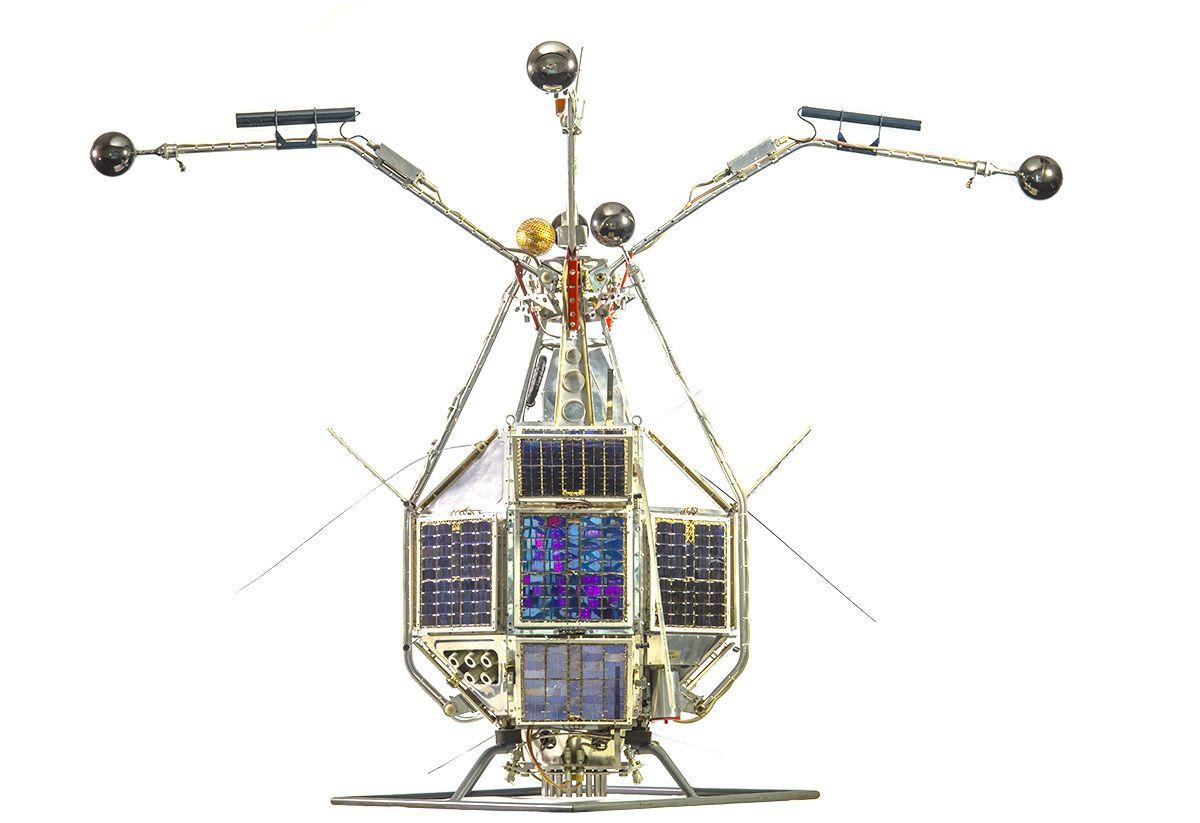
Similar to Magion 1, four other spacecraft from the Magion series were also launched into orbit together with a main spacecraft. Magion 2 (1989-1990) and Magion 3 (1991-1992) were equipped with numerous scientific instruments. For example, they carried receivers for analysis of electromagnetic signals which were supposed to be emitted from the main spacecraft either by a large loop antenna or by an electron beam. A set of nozzles for releasing compressed air was used to control the distance from the main spacecraft.
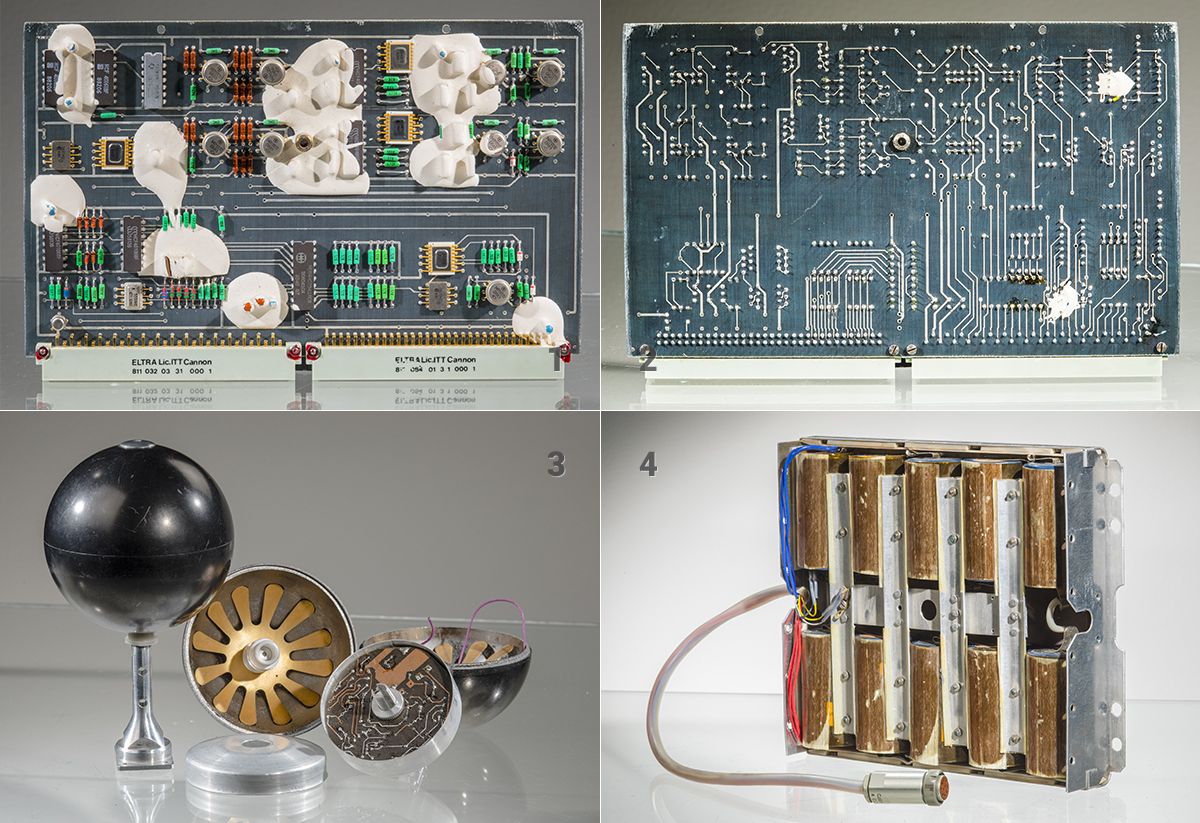
Picture:
1+2/ Flightspare model of the electronic board from the wave analyser developed for the MAGION 2 satellite3/ Electric-field sensor with integrated pre-amplifier developed for the MAGION 2-5 spacecraft4/ The accumulator block from the Magion 2-5 payload.
Magion 4 (1995-1997) measured properties of the space environment inside the magnetosphere, in the source regions of aurora borealis and australis. Magion 5 (1996-2002) worked in the tail of the magnetosphere and at its outer boundaries with the solar wind. Both spacecraft were spin stabilized, pointing to the Sun. They carried a set of scientific instruments for magnetospheric investigations: magnetometers, radio wave analysers, particle detectors, and an instrument for cold plasma measurements.
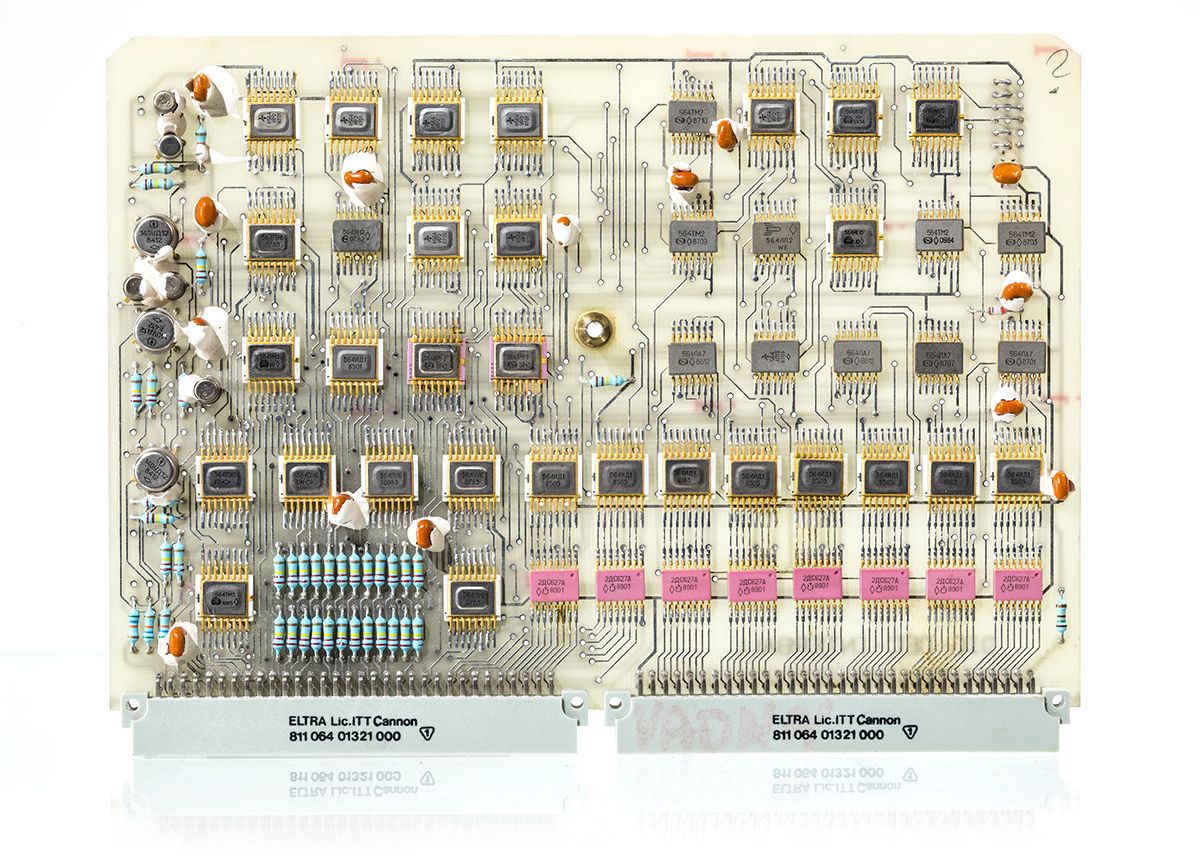
Picture: Prototype of the electronic board of the command decoder developed for the MAGION 4 and 5 satellites.
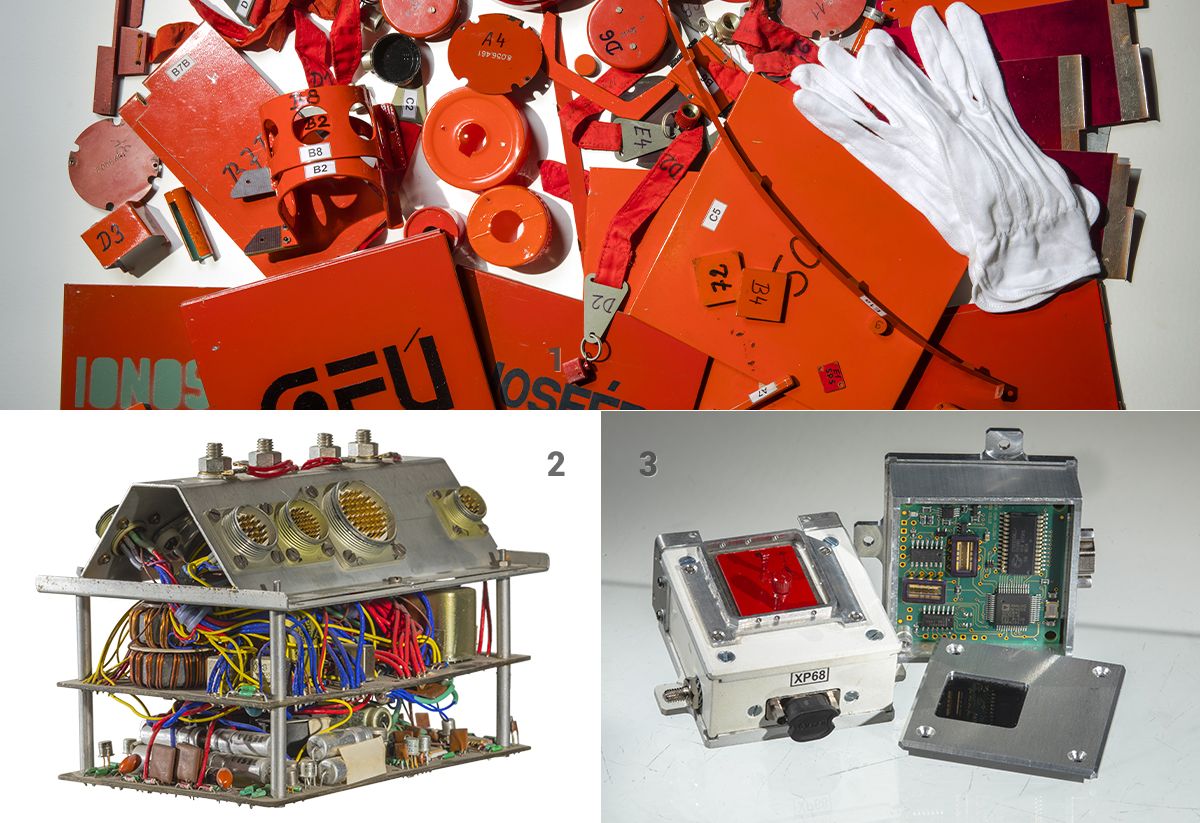
Pictures:
1/ Different types of covers which protect sensitive parts of satellite instrumentation during the pre-flight operations. Thered parts have to be removed before flight..2/ Prototype of the control block of the power supply system developed for the MAGION 2-5 satellites3/ Magion development lead to a new Digital Sun sensor DSS-3 dedicated for the estimation of the satellite orientation with respect to the Sun, prepared for the Luna-Resurs spacecraft.The sensor has also been successfully used for the RadioAstron and Chibis satellites.
Operations of the spacecraft and scientific investigations were very flexible. Scientists, after arriving to the Panska Ves telemetry station, could directly participate in the experiments. They could follow their results in real time and immediately use telecommands to change settings of their instruments for the next round of measurements.
Picture: Energetic system of the Magion 5 spacecraft, used for laboratory simulation of possible failures. It helped to localize the damage, understand what happened, and to prepare a sequence of rescue telecommands. Following this, the spacecraft worked succesfully for more than 4 years.
Useful information was not only obtained from the measurements of onboard instruments but also from the behaviour of the spacecraft itself. A temperature decrease down to -60°C caused temporary technical problems with the Magion 4 spacecraft but the largest puzzle, however, was linked to an unexpected behaviour of Magion 5. The spacecraft was unfortunately damaged by the personnel of the cosmodrome during the pre-launch preparations. Czech engineers and technicians then used the backup system for simulation of possible failures in the laboratory conditions. After 20 months of resuscitation attempts they succeeded in activating the spacecraft. While the scientists challenged the secrets of space by their measurements, the spacecraft, in turn, challenged the enthusiasm, intellect, and patience of the scientists and engineers.
 play / 1. part - An interview about the Magion 5 spacecraft with Dr. Tříska and Vojta. Broadcasted in "Nula-Jednička" session, Radio Leonardo, 7. 11. 2005.
play / 1. part - An interview about the Magion 5 spacecraft with Dr. Tříska and Vojta. Broadcasted in "Nula-Jednička" session, Radio Leonardo, 7. 11. 2005.
1. part - the spacecraft was silenced (in Czech)
2. part - Problem solved (in Czech)
„We discovered that seemingly unsolvable problems can be eventually resolved with a bit of luck and patience.“
Jaroslav Vojta (*1935), lead engineer and designer of Magion spacecraft
Download
Magion1 - Paper cut (PDF in Czech)
Pictures: M. Frouz





